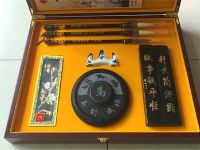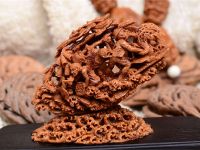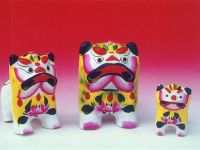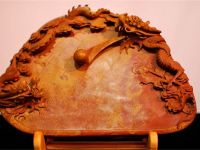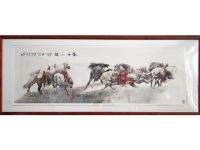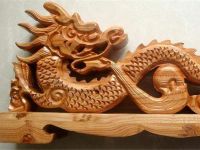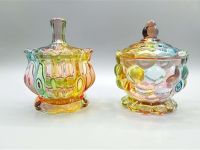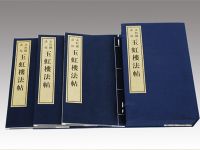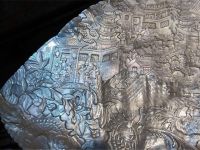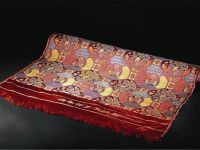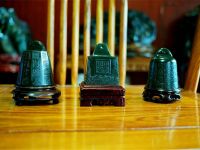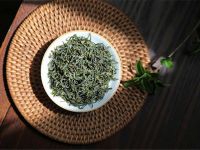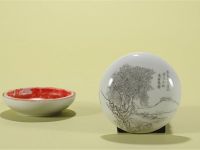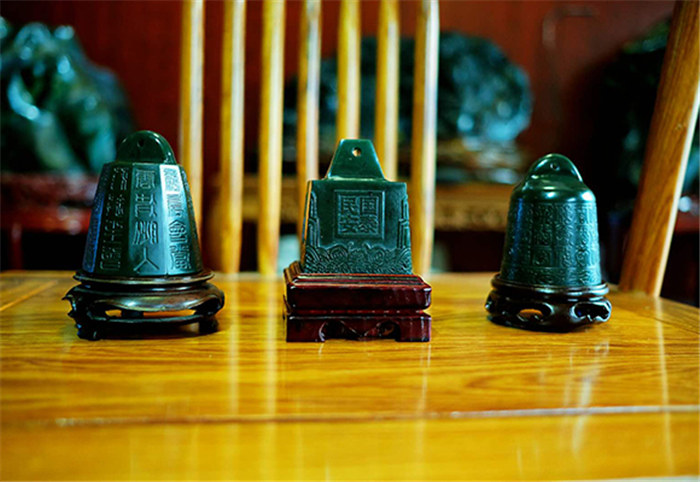
Shandong, the pearl of East China, faces South Korea and Japan across the sea, is an important cradle of Chinese civilization and the birthplace of Confucian culture. With such a profound culture, time-honored history and natural landscapes, Shandong boasts many world-class cultural and natural heritages, famous cities and towns, historical relics and sites, ancient schools and manors.
The photo exhibition of Shandong handcrafts shows the amazing art of Shandong. Please click the picture to learn more.
Qi Brush Pen As a writing tool used by Chinese people for more than 2,000 years, brush pens and calligraphy are one of several indispensable symbols in Chinese culture. In Guangrao, Shandong, many family workshops are still using ancestral craftsmanship to make traditional Qi Brush Pens. Qi Brush Pen is characterized by "sharp, uniform, smooth, and resilient", which is loved by calligraphy masters throughout the ages. Its production requires more than 150 processes. Qingzhou Red Silk Inkstone As early as the Tang Dynasty, Qingzhou Red Silk Inkstone produced in Qingzhou, Shandong was listed as the first of the four famous inkstones. According to records, Qingzhou Red Silk Inkstone fits with the ink well, and the sharp of the brush pen is not blunt after long use. The calligraphy masters of the past dynasties, such as Liu Gongquan, Ouyang Xiu and others, have had special love to it. Not only that, due to the gradual scarcity of quarries, the price of red silk inkstone has also risen. Replica Cujü (Ancient Soccer Ball) Cujü is a sporting activity that originated from the Qi State (Linzi City, Shandong Province) in the Warring States Period. During the Tang Dynasty, it was carried forward with the invention of the inflatable ball. It became popular among nobles and scholars, and the rules tended to be modern football. Cujü reached its peak in the Song Dynasty and gradually spread to the homes of ordinary people due to economic development. Gaomi Sanjue (Three Wonders of Gaomi, Clay Sculptures, New Year Pictures, Paper-cutting) Gaomi Sanjue refers to the three handicrafts from Gaomi, Shandong: Ash-Rubbing New Year Pictures, Paper-cutting, and Niejiazhuang Clay Sculptures. Ash-Rubbing is a painting technique of rubbing the outline with the ash burnt from willow branches, and then using traditional Chinese painting methods to flesh out. Gaomi Paper-cutting is known for its extensive themes and metaphorical representations. The Niejiazhuang Clay Sculpture originated from the ceremonial firework mud piers that were carved for displays, and it has developed into more than 70 distinct characters and figures. Qingzhou Red Silk Inkstone As early as the Tang Dynasty, Qingzhou Red Silk Inkstone produced in Qingzhou, Shandong was listed as the first of the four famous inkstones. According to records, Qingzhou Red Silk Inkstone fits with the ink well, and the sharp of the brush pen is not blunt after long use. The calligraphy masters of the past dynasties, such as Liu Gongquan, Ouyang Xiu and others, have had special love to it. Not only that, due to the gradual scarcity of quarries, the price of red silk inkstone has also risen. Lu Ban Lock Luban lock is a wooden puzzle that originated in ancient times. It is said to have been invented by Lu Ban, the master carpenter of the State of Lu. Its main mechanical principle is to use the mortise and tenon structure to secure multiple wooden parts together. It can train one’s intelligence. Mortise and tenon structure, which is similar to that in Luban lock, has great practical significance in traditional Chinese architecture. Shandong Embroidery Lu embroidery is an ancient fabric processing technique. It originated in the Spring and Autumn Period of China, and has receive different domestic and foreign influences during the long developing process. The most prominent and important of these was the introduction of Western drawnwork technique through the missionary James Mamuel in 1896. Since then, craftsmen from all over the world have developed unique Neo Lu Embroidery with the combination of Chinese and Western skills. Feicheng Peach Wood Carving Feicheng is located in the heart of Shandong Province and is famous for production of peaches. Feicheng has one hundred thousand mu (approximately 2470 acres or 67 km2) of peach blossom forest, and holds a annual festival with the theme of peach blossom sightseeing every April. The peach wood carving culture originated from an ancient Chinese belief that objects carved from peach wood could bring peace and protect people from evil spirits. Porcelain and Glaze Zibo, Shandong is famous for its Porcelain and Glaze. Compared with other ceramic products, Zibo Porcelains are simple in shape, novel in decoration, bright and colorful. The earliest Glaze product made with Zibo colored glaze was a snuff bottle from the Qing Dynasty. Later, it developed into toys, ornaments, jewelry and other glazed objects. The special dyes used in the production process make it shine fantastically under the light. The Three Treasures of Qufu The Three Treasures of Qufu refer to the Pistache Wood Carving, Nishan inkstones and Stone Rubbings produced in Qufu, Shandong. Pistache Wood Carving is made from the wood grown in the forest of Confucius, is known for their firmness and resilience, and has a profound meaning. Nishan inkstone was a tribute to the Emperor in the Ming Dynasty. Due to the gradual depletion of quarry mining, it is very rare in modern times. In ancient times, when the printing press technology was not yet mature, inscriptions on stone inscriptions were the main way for people to copy information, so they had great historical research value. Qingdao Shell Carving Since ancient times, people have used shells as decorations. In the State of Lu of the Zhou Dynasty, soldiers would hang a string of shells on their armor as a part of their uniform décor, to strengthen their military momentum. Later, people inlaid simply carved shells in furniture or used as ornaments, called Luodian. Qingdao shell carving had developed from then on. It uses the natural texture of shells to carve out vivid images. Zhoucun Silk Zhoucun County, Zibo City, Shandong Province is known as the "Hometown of Silk". It has been producing silk since the Ming Dynasty and became the silk center of Shandong in the Qing Dynasty. Zhoucun Silk is famous for its exquisite and layered patterns, and it has a wide variety of colors, with nearly 100 choices. Taishan Jade Taishan jade is produced in Mount Tai in Tai'an, Shandong. In ancient times, Mount Tai was the place where the emperors of the past dynasties conferred meditation, and was the first of the five sacred mountains. Therefore, Taishan Jade also have the meaning of stable residence, as stable as Mount Tai. It is said that Taishan Jade also has medicinal functions. Long-term wearing can make the trace elements infiltrate the body and enhance immunity. Rizhao Green Tea Rizhao, Shandong is one of the three major coastal green tea producing cities in the world, and it is the most northern green tea producing area in China. Rizhao green tea has a longer growth cycle and also has many qualities that other green tea varieties do not have. The Tea Science Institute of the Academy of Agricultural Sciences commented: high aroma, strong taste, thick leaves, and can be brewed for many times. Zibo Engraved Porcelain The Engraved Porcelain carved in Zibo is a collection of various art forms of Chinese culture, including traditional Chinese painting, calligraphy and seal cutting. Even if the carving of Engraved Porcelain is a relatively young skill, it has already made a name for itself on the international stage. With diverse products ranging from as small as plates to as large as wall pieces, masters of this art in Zibo, Shandong have produced diplomatic gifts and invalauble















